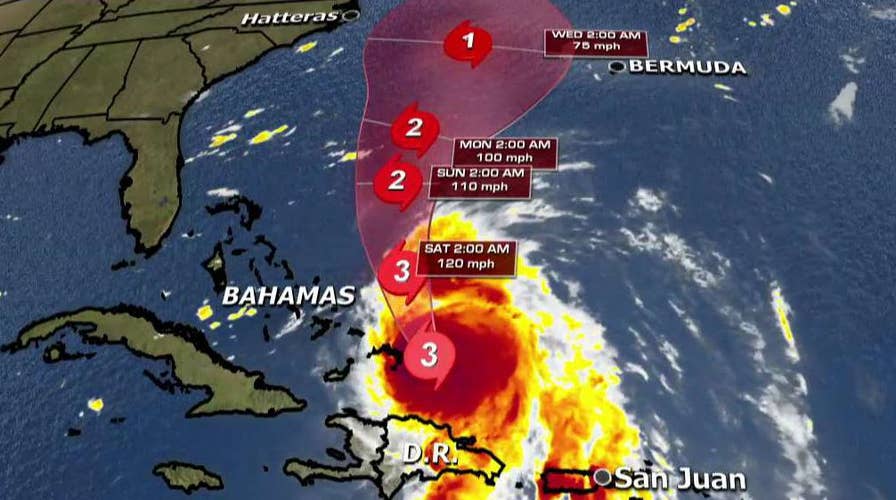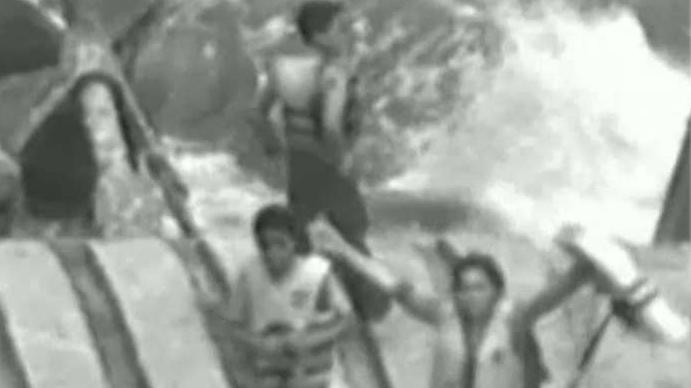Deadly Hurricane Maria set its eye on Turks and Caicos on Friday after leaving Haiti and the northern coast of the Dominican Republic drenched and battered.
The Category 3 storm was centered about 35 miles east-northeast of Grand Turk island and was moving northwest at 7 mph, the National Hurricane Center said in its 6:30 a.m. update. Maria is expected to weaken during the next two days and veer into the open Atlantic. It is not set to threaten the U.S. mainland.
Rains and dangerous high waves began to subside in the island of Hispanola, where Maria knocked down trees and power lines. Joel Santos, president of the country’s hotel association, said the hurricane didn't damage the tourism infrastructure.
Meanwhile, Puerto Rico residents face the prospect of going weeks, perhaps even months without electricity. Some are contemplating leaving.
“You cannot live here without power,” said Hector Llanos, a 78-year-old retired New York police officer who planned to leave Saturday for the U.S. mainland.
Maria is the second major hurricane to hit the Caribbean this month and the strongest storm to hit the U.S. territory of Puerto Rico in nearly 90 years.
Maria has already claimed at least 19 lives, however, additional deaths were being reported and the actual death toll was unlikely to be known for several days.
The territory's $73 billion debt crisis had left agencies such as the state power company broke even before the storm hit. It abandoned most basic maintenance in recent years, leaving the island subject to regular blackouts.
"We knew this was going to happen given the vulnerable infrastructure," Gov. Ricardo Rossello said.
The Federal Emergency Management Agency said it would open an air bridge from the mainland on Friday, with three to four military planes flying to the island every day carrying water, food, generators and temporary shelters.
"There's a humanitarian emergency here in Puerto Rico," Rossello said. "This is an event without precedent."
The government has hired 56 small contractors to clear trees and put up new power lines and poles and will be sending tanker trucks to supply neighborhoods as they run out of water. The entire island has been declared a federal disaster zone.
Cellphone and internet service collapsed in much of Puerto Rico. The only radio station that remained on the air during the hurricane — WAPA 680 AM — was relaying messages to help connect friends and families.
President Trump told reporters the island had been “totally obliterated” and he planned to visit, Reuters reported. New York Gov. Andrew Cuomo also announced plans to visit Puerto Rico.
Maria’s death toll across the Caribbean, meanwhile, climbed to at least 19, nearly all of them on the hard-hit island of Dominica.
Prime Minister Roosevelt Skerrit wept as he spoke to a reporter on the nearby island of Antigua.
"It is a miracle there were not hundreds of deaths," he said, adding: "Dominica is going to need all the help the world has to offer."
The Associated Press contributed to this report.


